Test Bank for High-Acuity Nursing 7th Edition Wagner
$35.00
Test Bank for High-Acuity Nursing 7th Edition Wagner ,
Test Bank for High-Acuity Nursing, 7th Edition, Kathleen Dorman Wagner
Table of Contents
PART 1: INTRODUCTION TO HIGH-ACUITY NURSING
1. High-Acuity Nursing
2. Holistic Care of the Patient and Family
3. Palliative and End-of-life Care
4. The Older Adult High-Acuity Patient
PART 2: THERAPEUTIC SUPPORT OF THE HIGH-ACUITY PATIENT
5. Acute Pain Management
6. Nutrition Support
7. Mechanical Ventilation
8. Basic Hemodynamic Monitoring
9. Basic Cardiac Rhythm Monitoring
10. Complex Wound Management
PART 3: PULMONARY
11. Determinants and Assessment of Pulmonary Function
12. Alterations in Pulmonary Function
PART 4: CARDIOVASCULAR
13. Determinants and Assessment of Cardiac Function
14. Alterations in Cardiac Function
15. Alterations in Myocardial Tissue Perfusion
PART 5: NEUROLOGIC
16. Determinants and Assessment of Cerebral Function
17. Mentation and Sensory Motor Complications of Acute Illness
18. Acute Stroke Injury
19. Traumatic Brain Injury
20. Acute Spinal Cord Injury
PART 6: GASTROINTESTINAL
21. Determinants and Assessment of Gastrointestinal Function
22. Alterations in Gastrointestinal Function
23. Alterations in Liver Function
24. Alterations in Pancreatic Function
PART 7: FLUID AND ELECTROLYTES
25. Determinants and Assessment of Fluid and Electrolyte Balance
26. Alterations in Fluid and Electrolyte Balance
27. Alterations in Kidney Function
PART 8: HEMATOLOGIC
28. Determinants and Assessment of Hematologic Function
29. Alterations in Red Blood Cell Function and Hemostasis
30. Alterations in White Blood Cell Function and Oncologic Emergencies
PART 9: NUTRITION AND METABOLISM
31. Determinants and Assessment of Nutrition and Metabolic Function
32. Metabolic Response to Stress
33. Diabetic Crises
PART 10: MULTISYSTEM DYSFUNCTION
34. Determinants and Assessment of Oxygenation
35. Multiple Trauma
36. Acute Burn Injury
37. Shock States
38. Multiple Organ Dysfunction Syndrome
39. Solid Organ and Hematopoietic Stem Cell Transplantation
Test Bank For High-Acuity Nursing, 7th Edition Kathleen Dorman Wagner
High Acuity Nursing, 7e (Wagner)
Chapter 1 High-Acuity Nursing
1) The patient who had surgery yesterday reports his chest feels tight. Assessment reveals respiratory rate of 29, inspiratory wheezes, stridor, and an oxygenation saturation of 80%. The nurse would consider this patient to be which priority for transfer to the intensive care unit (ICU)?
1. Priority 1
2. Priority 2
3. Priority 3
4. Priority 4
Answer: 1
Explanation: 1. This patient is exhibiting signs of an acute respiratory event for which intubation or other intensive treatment may be necessary. Priority 1 patients are acutely ill and need intensive treatment and monitoring not provided outside of the ICU.
2. Priority 2 refers to patients who need intensive monitoring and may potentially need additional interventions. They are typically not evolving an acute event as is the case with this patient.
3. Priority 3 patients are critically ill but have little chance of recovery from their illnesses. Limits are placed on therapeutic interventions and they can be cared for in areas other than the ICU if necessary.
4. Priority 4 patients have no signs or symptoms that indicate intensive monitoring or treatment are necessary.
Page Ref: 2
Cognitive Level: Analyzing
Client Need/Sub: Safe Effective Care Environment : Management of Care
Standards: QSEN Competencies: I.A.11 Examine nursing roles in assuring coordination, integration, and continuity of care. | AACN Essential Competencies: IX.11 Provide nursing care based on evidence that contributes to safe and high-quality patient outcomes within healthcare microsystems. | NLN Competencies: Context and Environment: Practice: Apply professional standards; show accountability for nursing judgment and actions; develop advocacy skills. | Nursing/Integrated Concepts: Nursing Process: Planning
LO & MNL LO: LO01: Describe the various healthcare environments in which high-acuity clients receive care.
2) The daughter of a patient who is dying questions the placement of her father on the medical-surgical care unit (MSCU). She requests he be placed in the intensive care unit (ICU) because of concern her father may not receive close observation on a busy hospital unit. Which action is indicated by the nurse?
1. Notify the intensive care unit of an impending transfer.
2. Tell the daughter that her father does not meet criteria for placement in the more expensive ICU.
3. Discuss the care that can be provided on the unit with the family member.
4. Contact the physician.
Answer: 3
Explanation: 1. The nurse cannot make this transfer decision independently.
2. Telling the daughter that her father does not meet criteria for transfer is not therapeutic. Bringing up the issue of cost may cause the daughter to offer to pay the difference between the costs of the two units. This would create a serious ethical dilemma.
3. The best initial response is to help the daughter understand the level of care and observation that will be provided on the MSCU to help her understand that her father’s care will be a priority.
4. The nurse should try to intervene in this situation before involving the physician.
Page Ref: 2
Cognitive Level: Analyzing
Client Need/Sub: Safe Effective Care Environment : Management of Care
Standards: QSEN Competencies: I.A.11 Examine nursing roles in assuring coordination, integration, and continuity of care. | AACN Essential Competencies: IX.11 Provide nursing care based on evidence that contributes to safe and high-quality patient outcomes within healthcare microsystems. | NLN Competencies: Context and Environment: Practice: Apply professional standards; show accountability for nursing judgment and actions; develop advocacy skills. | Nursing/Integrated Concepts: Nursing Process: Implementation
LO & MNL LO: LO01: Describe the various healthcare environments in which high-acuity clients receive care.
3) A nurse who is contemplating taking a position in an intensive care unit is reviewing her strengths and weaknesses. Which characteristics of the nurse will be of the greatest benefit in the intensive care environment?
1. Feels comfortable in ever-changing situations
2. Closely evaluates the pros and cons of each decision for a long period of time before making a decision
3. Is quiet and introverted
4. Is excited about all new experiences
Answer: 1
Explanation: 1. The nurse in the intensive care unit must be open to ever-changing situations. The nurse must be flexible.
2. The rapid changes in the intensive care unit do not allow for extended time when considering actions.
3. A quiet and introverted nurse may not be a good match for the high-paced, high-acuity care unit due to the need for teamwork and interaction.
4. Excitement about all experiences is a beneficial characteristic in healthcare but is not the most important factor for this care unit.
Page Ref: 5
Cognitive Level: Analyzing
Client Need/Sub: Safe Effective Care Environment : Management of Care
Standards: QSEN Competencies: II.B.1 Demonstrate awareness of own strengths and limitations as a team member. | AACN Essential Competencies: II.8 Promote achievement of safe and quality outcomes of care for diverse populations. | NLN Competencies: Context and Environment: Practice: Apply professional standards; show accountability for nursing judgment and actions; develop advocacy skills. | Nursing/Integrated Concepts: Nursing Process: Assessment
LO & MNL LO: LO02: Identify the need for resource allocation and staffing strategies for high-acuity clients.
4) The registered nurse is working as charge nurse on a busy high-acuity care unit. Unexpectedly, a coworker becomes ill and needs to leave. There is a period of time in which the unit is short staffed while the ill coworker’s replacement travels in to work. What action by the charge nurse is indicated?
1. Make no changes until the replacement nurse arrives.
2. Assign the less acute patients to be cared for by the unlicensed assistive personnel.
3. Assign the unlicensed assistive personnel to watch the monitors and call for help if a patient “gets into trouble.”
4. Contact the house supervisor and ask for a float nurse to be sent to the unit.
Answer: 4
Explanation: 1. The unit is understaffed. Replacement help must be provided. It is inappropriate to wait for the replacement nurse.
2. The unlicensed assistive personnel are only able to provide care under the direct supervision of the nurse.
3. Watching monitors is not within the job description of the unlicensed assistive personnel and is not appropriate. The manager would be putting both patient safety and the unlicensed assistive personnel at risk.
4. The manager should obtain help until the replacement nurse arrives. Contacting the house supervisor and asking for a temporary float nurse is the best intervention.
Page Ref: 5
Cognitive Level: Analyzing
Client Need/Sub: Safe Effective Care Environment : Management of Care
Standards: QSEN Competencies: II.A.2 Describe scopes of practice and roles of healthcare team members. | AACN Essential Competencies: II.1 Apply leadership concepts, skills, and decision making in the provision of high-quality nursing care, healthcare team coordination, and the oversight and accountability for care delivery in a variety of settings. | NLN Competencies: Context and Environment: Knowledge: Scope of practice considerations | Nursing/Integrated Concepts: Nursing Process: Implementation
LO & MNL LO: LO02: Identify the need for resource allocation and staffing strategies for high-acuity clients.
5) A recent nursing school graduate reports having an interview with a magnet hospital. When preparing for the interview, the graduate nurse researches the concept of magnet status. Which perceptions by the nurse indicate an adequate understanding?
1. Magnet status is an accreditation from the National League for Nurses.
2. Magnet status facilities pay substantial recruitment bonuses.
3. Magnet status facilities promote the interests of professional nursing.
4. Magnet status hospitals must establish nurse-to-patient ratios.
Answer: 3
Explanation: 1. Magnet status is a designation developed by the American Nurses Credentialing Center.
2. Facilities with magnet designation attract nurses because of their work environment. Often there is no need to pay recruitment bonuses.
3. Magnet status is awarded to hospitals that can prove their commitment to professional nursing practices.
4. Nurse-to-patient ratios are not a requirement for magnet hospital designation.
Page Ref: 5
Cognitive Level: Analyzing
Client Need/Sub: Safe Effective Care Environment : Management of Care
Standards: QSEN Competencies: II.A.10 Identify system barriers and facilitators of effective team functioning. | AACN Essential Competencies: II.1 Apply leadership concepts, skills, and decision making in the provision of high-quality nursing care, healthcare team coordination, and the oversight and accountability for care delivery in a variety of settings. | NLN Competencies: Context and Environment: Knowledge: Accreditation standards | Nursing/Integrated Concepts: Nursing Process: Evaluation
LO & MNL LO: LO02: Identify the need for resource allocation and staffing strategies for high-acuity clients.
6) A team of nurses would like to research outcomes of intensive care that expand beyond those that are normally studied. This team would recognize which outcome as most commonly studied?
1. Patient comfort
2. Patient perceived quality of life
3. Functional status
4. Mortality
Answer: 4
Explanation: 1. Patient comfort is a very important outcome, but is not the one most commonly studied.
2. Quality of life after intensive care is a very important outcome, but is not the one most commonly studied.
3. Functional status after treatment in the intensive care unit is a very important outcome, but is not the one most commonly studied.
4. Mortality is the most commonly studied outcome of intensive care treatment.
Page Ref: 6
Cognitive Level: Applying
Client Need/Sub: Safe Effective Care Environment : Management of Care
Standards: QSEN Competencies: III.A.2 Describe EBP to include the components of research evidence, clinical expertise, and patient/family values. | AACN Essential Competencies: III.1 Explain the interrelationships among theory, practice, and research. | NLN Competencies: Knowledge and Science: Practice: Design quality research studies as appropriate. | Nursing/Integrated Concepts: Nursing Process: Assessment
LO & MNL LO: LO02: Identify the need for resource allocation and staffing strategies for high-acuity clients.
7) A newly employed nurse is working with an experienced registered nurse. During the shift, the experienced nurse routinely accesses a tablet computer. What advice should the experienced RN offer the newly licensed nurse about this technology?
1. “Be careful that you don’t pay more attention to the computer than you do to the patient.”
2. “If you send a copy of your patient’s order sheet and lab results to the tablet, it can save you time during the day.”
3. “I’ll show you where there are some stress-relieving games you can access from this tablet.”
4. “These tablets are such time-savers. I’ll show you a few shortcuts to help you get started.”
Answer: 1
Explanation: 1. Technology can be intriguing and can draw the focus away from the patient.
2. It is not appropriate for the nurse to make a copy of the patient’s medical record in any form.
3. Tablets are for patient care use, not for gaming.
4. The nurse should not encourage the newly licensed nurse to take shortcuts.
Page Ref: 7
Cognitive Level: Applying
Client Need/Sub: Safe Effective Care Environment : Management of Care
Standards: QSEN Competencies: V.B.1 Demonstrate effective use of technology and standardized practices that support safety and quality. | AACN Essential Competencies: IV.1 Demonstrate skills in using patient care technologies, information systems, and communication devices that support safe nursing practices. | NLN Competencies: Quality and Safety: Practice: Use technologies that contribute to safety. | Nursing/Integrated Concepts: Nursing Process: Implementation
LO & MNL LO: LO03: Examine the use of technology in high-acuity environments.
8) A nurse says, “I worry that these machines in the intensive care unit interfere with my ability to establish a therapeutic relationship with my patients.” What response by the nurse manager is indicated?
1. “Technology improves our patient outcomes.”
2. “I completely understand how you feel.”
3. “There are ways to increase your interaction with your assigned patients.”
4. “These feelings may be a sign that this is not the work environment for you.”
Answer: 3
Explanation: 1. Technology does improve outcomes, but the nurse has more immediate concerns.
2. Telling the nurse that “you understand” his feelings does little to meet his need for education.
3. The use of technology can lead the nurse to feel distanced from the patient. There are strategies the nurse can use to personalize care. He should be reminded that the use of machines does not take away the need for nursing assessment and care.
4. It is premature to decide that this nurse is not suited to the intensive care work environment.
Page Ref: 8
Cognitive Level: Analyzing
Client Need/Sub: Safe Effective Care Environment : Management of Care
Standards: QSEN Competencies: V.B.1 Demonstrate effective use of technology and standardized practices that support safety and quality. | AACN Essential Competencies: IV.1 Demonstrate skills in using patient care technologies, information systems, and communication devices that support safe nursing practices. | NLN Competencies: Quality and Safety: Practice: Use technologies that contribute to safety. | Nursing/Integrated Concepts: Nursing Process: Evaluation
LO & MNL LO: LO03: Examine the use of technology in high-acuity environments.
9) A recently hired nurse has been overheard saying she does not need to check as closely on her assigned patients as there are many machines that will “just do it for you.” What action by the nurse manager is indicated?
1. The nurse manager should plan a skills check off for the nurse.
2. The nurse should have a notation placed in her file indicating a lack of due care to assigned patients.
3. The manager should issue a verbal warning to the nurse.
4. The nurse manager should discuss assessment priorities with the nurse.
Answer: 4
Explanation: 1. At this time, the nurse has not demonstrated a lack of clinical ability and a skills check off is premature.
2. It is premature to give a written or verbal warning to the nurse.
3. It is premature to give a written or verbal warning to the nurse.
4. The use of technology must be accompanied by nursing care and assessment. Failure to provide hands-on care may reflect overreliance on technology. The nurse manager will need to assess the nurse’s perceptions of responsibilities related to these areas.
Page Ref: 8
Cognitive Level: Analyzing
Client Need/Sub: Safe Effective Care Environment : Management of Care
Standards: QSEN Competencies: V.B.1 Demonstrate effective use of technology and standardized practices that support safety and quality. | AACN Essential Competencies: IV.1 Demonstrate skills in using patient care technologies, information systems, and communication devices that support safe nursing practices. | NLN Competencies: Quality and Safety: Practice: Use technologies that contribute to safety. | Nursing/Integrated Concepts: Nursing Process: Implementation
LO & MNL LO: LO03: Examine the use of technology in high-acuity environments.
10) The nurse who transferred to the intensive care environment 6 months ago tells the nurse manager that he feels “burned out.” The nurse voices curiosity about how this could happen after such a short time in the unit. The charge nurse’s response should contain which information?
1. Burnout is not limited to long-term exposure to a work environment.
2. Burnout cannot be predicted.
3. The nurse most likely is not a good candidate for the intensive care unit.
4. The nurse is having a delayed response to change in work environment.
Answer: 1
Explanation: 1. Burnout may result not only from remaining in a work environment for a long period of time but also from working in a stressful environment in which a great deal of flexibility is expected and patient conditions change rapidly.
2. Burnout can be predicted to occur in high-stress work environments.
3. The nurse may be a good candidate to work in the intensive care unit if techniques to manage stress and feeling of burnout are learned.
4. There is no indication the nurse is reacting to the change itself, but rather to the stress in the new environment.
Page Ref: 9
Cognitive Level: Analyzing
Client Need/Sub: Safe Effective Care Environment : Management of Care
Standards: QSEN Competencies: II.A.11 Examine strategies for improving systems to support team functioning. | AACN Essential Competencies: VIII Recognize the relationship between personal health, self-renewal, and the ability to deliver sustained quality care. | NLN Competencies: Context and Environment: Knowledge: AACN six principles of a healthy work environment; regulations and legislation relevant to nurses’ rights. | Nursing/Integrated Concepts: Nursing Process: Implementation
LO & MNL LO: LO04: Identify the components of a healthy practice environment.
11) A group of nurses have been asked to meet with the emergency department manager for stress debriefing after working an incident in which several children were killed. One of the nurses says, “I don’t know why this is necessary. We are all comfortable with our role in trying to save those kids.” What response by the manager is indicated?
1. “We need to meet so everyone can share their feelings about our response.”
2. “I thought we could use this situation to discuss who would be the best nurse to act as charge nurse when I am away from the department.”
3. “We need to meet so that you will have documented stress management education for your next pay raise consideration.”
4. “We need to review everyone’s actions during the incident to be sure that no one did anything wrong.”
Answer: 1
Explanation: 1. Debriefing sessions are used to allow the nurses a confidential location to explore their feelings and discuss the experience. These sessions are an effort to prevent stress-related burnout.
2. This debriefing session should focus on the incident, not on future department plans.
3. This meeting should focus on response to the incident. The benefits of the meeting should not be devalued as “documentation” for future pay raise considerations.
4. Reviews of actions during incidents are conducted, but this is not the purpose of a critical stress debriefing.
Page Ref: 10
Cognitive Level: Evaluating
Client Need/Sub: Safe Effective Care Environment : Management of Care
Standards: QSEN Competencies: II.A.11 Examine strategies for improving systems to support team functioning. | AACN Essential Competencies: VIII Recognize the relationship between personal health, self-renewal, and the ability to deliver sustained quality care. | NLN Competencies: Context and Environment: Knowledge: AACN six principles of a healthy work environment; regulations and legislation relevant to nurses’ rights. | Nursing/Integrated Concepts: Nursing Process: Implementation
LO & MNL LO: LO04: Identify the components of a healthy practice environment.
12) The nurse executive is planning education for new nurse managers regarding the AACN Standards for a Healthy Work Environment. Which information should be included?
1. The critical partners in the organization are physicians, members of the administration, and nurse managers.
2. Staff nurses must embrace authentic leadership and value it to ensure an effectively running patient care unit.
3. In critical care units the need for expert clinical skills is more important than simple communication skills.
4. True collaboration must be promoted to ensure a healthy work environment.
Answer: 4
Explanation: 1. The AACN standards indicated that nurses must be valued and committed partners in making policy, directing and evaluating clinical care, and leading organizational operations.
2. The nurse leader must embrace authentic leadership and lead by example to ensure effectively running patient care areas.
3. Communication skills and clinical skills have equal importance.
4. The AACN Standards for a Healthy Work Environment stress the value of true collaboration.
Page Ref: 8
Cognitive Level: Analyzing
Client Need/Sub: Safe Effective Care Environment : Management of Care
Standards: QSEN Competencies: II.A.11 Examine strategies for improving systems to support team functioning. | AACN Essential Competencies: VIII Recognize the relationship between personal health, self-renewal, and the ability to deliver sustained quality care. | NLN Competencies: Context and Environment: Knowledge: AACN six principles of a healthy work environment; regulations and legislation relevant to nurses’ rights. | Nursing/Integrated Concepts: Nursing Process: Planning
LO & MNL LO: LO04: Identify the components of a healthy practice environment.
13) A nurse who made an error is concerned about what will happen when the mistake is brought to light. What information should the nurse manager provide to this nurse?
1. “If an error is small I see no reason to report it.”
2. “All errors are serious and will likely result in some disciplinary action.”
3. “No one likes to admit errors but reporting helps others avoid the same mistake.”
4. “Errors are human and there is no need to dwell on them.”
Answer: 3
Explanation: 1. Errors both large and small must be reported.
2. Errors are serious, but there is not enough information to determine if disciplinary action will be necessary. In today’s culture the action would likely be supportive, not disciplinary.
3. The current culture of healthcare considers error reporting the responsible action to take. Awareness of errors is a way to initiate performance improvement.
4. Errors are human, but it is important to process the information concerning the error, as it will prevent them from happening in the future.
Page Ref: 11
Cognitive Level: Evaluating
Client Need/Sub: Safe Effective Care Environment : Management of Care
Standards: QSEN Competencies: V.A.5 Describe factors that create a culture of safety (such as open communication strategies and organizational error reporting systems). | AACN Essential Competencies: II.7 Promote factors that create a culture of safety and caring. | NLN Competencies: Quality and Safety: Knowledge: Factors that contribute to a systemwide safety culture; the importance of reporting hazards and adverse events; the “just culture” approach to system improvement. | Nursing/Integrated Concepts: Nursing Process: Implementation
LO & MNL LO: LO05: Describe the importance of client safety in the high-acuity environment.
14) While orienting to the critical care unit, the newly hired nurse notices that the preceptor is using a tablet computer during medication administration. The new nurse says, “That looks awkward and time consuming.” How should the preceptor reply?
1. “It is awkward but it is required and I am getting accustomed to it.”
2. “I use it to make certain I am medicating the right patient.”
3. “Using a tablet computer actually increases the speed at which I can deliver care.”
4. “I use the tablet computer to check on dosing and side effect information when I am giving new medications.”
Answer: 4
Explanation: 1. The preceptor should not focus on the difficulties associated with using a tablet computer.
2. The tablet computer will not help prevent “wrong patient” medication errors.
3. The purpose of using a tablet computer is not to increase the speed of care.
4. The nurse can use a tablet computer for many activities, including checking drug information.
Page Ref: 8
Cognitive Level: Analyzing
Client Need/Sub: Safe Effective Care Environment : Management of Care
Standards: QSEN Competencies: V.B.1 Demonstrate effective use of technology and standardized practices that support safety and quality. | AACN Essential Competencies: IV.1 Demonstrate skills in using patient care technologies, information systems, and communication devices that support safe nursing practices. | NLN Competencies: Quality and Safety: Practice: Use technologies that contribute to safety. | Nursing/Integrated Concepts: Nursing Process: Implementation
LO & MNL LO: LO03: Examine the use of technology in high-acuity environments.
15) A group of nurse managers are concerned about a series of recent errors made by several nurses in the critical care units. The mangers should advocate for which change to help promote patient safety?
1. Increased unlicensed personnel for the unit
2. Reduction of the presence of managerial input to encourage staff nurses to assume responsibility for outcomes
3. Pay increases to attract better nurses
4. Increase in the number of nurses on the unit who have baccalaureate degrees
Answer: 4
Explanation: 1. Having sufficient help is important, but reduction of errors is more closely linked to higher nurse-patient ratios.
2. The unit experiencing errors will need more nurse manager input not less.
3. Pay is not linked to reducing nursing errors.
4. Facilities with higher numbers of nurses educated at the baccalaureate level or higher have lower mortality rates. Having well-educated nurses leads to lower accident rates.
Page Ref: 12
Cognitive Level: Analyzing
Client Need/Sub: Safe Effective Care Environment : Management of Care
Standards: QSEN Competencies: V.A.5 Describe factors that create a culture of safety (such as open communication strategies and organizational error reporting systems). | AACN Essential Competencies: II.7 Promote factors that create a culture of safety and caring. | NLN Competencies: Quality and Safety: Knowledge: Factors that contribute to a systemwide safety culture; the importance of reporting hazards and adverse events; the “just culture” approach to system improvement. | Nursing/Integrated Concepts: Nursing Process: Implementation
LO & MNL LO: LO05: Describe the importance of client safety in the high-acuity environment.
16) The nurse manager of an emergency department has been notified that a patient is being transferred from a rural ED. What should the manager check before responding to this notification?
Note: Credit will be given only if all correct choices and no incorrect choices are selected.
Select all that apply.
1. Has a physician at this hospital agreed to accept the patient?
2. Does the patient have insurance?
3. When is the patient supposed to arrive?
4. Is the patient likely to survive transfer?
5. Is a bed available in the appropriate unit to provide care for the patient?
Answer: 1, 3, 5
Explanation: 1. For a transfer to occur legally, a physician at the receiving hospital must agree to accept the patient.
2. The patient’s insurance status is not a part of the decision-making tree.
3. The receiving hospital must be made aware of the estimated time the patient will arrive.
4. Therapeutic interventions to minimize complications en route must be taken, but there is no guarantee of survival through the transfer.
5. Bed availability in the receiving hospital is a consideration before transfer.
Page Ref: 3
Cognitive Level: Analyzing
Client Need/Sub: Safe Effective Care Environment : Management of Care
Standards: QSEN Competencies: I.A.11 Examine nursing roles in assuring coordination, integration, and continuity of care. | AACN Essential Competencies: IX.11 Provide nursing care based on evidence that contributes to safe and high-quality patient outcomes within healthcare microsystems. | NLN Competencies: Context and Environment: Practice: Apply professional standards; show accountability for nursing judgment and actions; develop advocacy skills. | Nursing/Integrated Concepts: Nursing Process: Implementation
LO & MNL LO: LO01: Describe the various healthcare environments in which high-acuity clients receive care.
17) Every bed in the intensive care unit is occupied when a call comes from the emergency department about admitting a patient who was critically injured in an explosion. Which patients would the manager evaluate as a possible transfer to a less acute unit?
Note: Credit will be given only if all correct choices and no incorrect choices are selected.
Select all that apply.
1. A 70-year-old man who remains hemodynamically unstable after cardiac surgery the previous day
2. A 48-year-old patient who was admitted for diabetic ketoacidosis whose blood glucose is now 240 mg/dL
3. A 40-year-old patient admitted for an unintentional overdose of blood pressure medication who is now conscious and alert
4. An 18-year-old patient who developed a pulmonary embolism this morning and is being mechanically ventilated
5. A 41-year-old patient with severe sepsis secondary to renal failure for whom the family has requested “no code” status
Answer: 2, 3, 5
Explanation: 1. Age alone does not determine whether this patient should be transferred out of the ICU. The patient is hemodynamically unstable so intensive care is justified.
2. This patient is more stable now and may be able to tolerate transfer. The manager should contact the physician about transfer to a step-down unit.
3. This patient can likely be cared for adequately in a lower intensity unit.
4. In some facilities, mechanical ventilation can be managed in a lower acuity setting; however, this patient is still in the emergent phase of pulmonary embolism and requires intensive care.
5. If intensive care-level interventions such as mechanical ventilation and cardiopulmonary resuscitation are refused, the patient generally can be cared for in a less intense environment.
Page Ref: 2
Cognitive Level: Analyzing
Client Need/Sub: Safe Effective Care Environment : Management of Care
Standards: QSEN Competencies: I.A.11 Examine nursing roles in assuring coordination, integration, and continuity of care. | AACN Essential Competencies: IX.11 Provide nursing care based on evidence that contributes to safe and high-quality patient outcomes within healthcare microsystems. | NLN Competencies: Context and Environment: Practice: Apply professional standards; show accountability for nursing judgment and actions; develop advocacy skills. | Nursing/Integrated Concepts: Nursing Process: Assessment
LO & MNL LO: LO01: Describe the various healthcare environments in which high-acuity clients receive care.
18) Which actions would the charge nurse evaluate as indicating “alarm fatigue” in a nurse who works in an intensive care unit (ICU)?
Note: Credit will be given only if all correct choices and no incorrect choices are selected.
Select all that apply.
1. The nurse completes measuring a patient’s urine before responding to a ventilator alarm in the next cubicle.
2. The nurse says, “Would you check this patient’s IV? The controller alarm keeps sounding.”
3. The manager discovers deactivation of a heart rate alarm in the rooms of two patients assigned to the nurse.
4. The nurse responds to the wrong cubicle when a ventilator alarm sounds.
5. The nurse responds to an alarm while saying, “I wish this patient would stop moving his arm around. It makes his IV alarm sound.”
Answer: 1, 3
Explanation: 1. Ignoring alarms may result from “alarm fatigue.”
2. This nurse is responding to the alarm, so “alarm fatigue” is not evident.
3. If the alarm was deactivated in one room, an error may be to blame. Deactivation in two rooms increases the probability that the deactivation was intentional. Intentional deactivation of alarms can be caused by “alarm fatigue.”
4. In a unit where alarms sound frequently it is possible to respond to the wrong cubicle. This would not indicate “alarm fatigue.”
5. There is no indication that the nurse is ignoring the alarm or is intending to disable the alarm, so “alarm fatigue” is not yet a critical issue.
Page Ref: 7
Cognitive Level: Analyzing
Client Need/Sub: Safe Effective Care Environment : Management of Care
Standards: QSEN Competencies: V.B.1 Demonstrate effective use of technology and standardized practices that support safety and quality. | AACN Essential Competencies: IV.1 Demonstrate skills in using patient care technologies, information systems, and communication devices that support safe nursing practices. | NLN Competencies: Quality and Safety: Practice: Use technologies that contribute to safety. | Nursing/Integrated Concepts: Nursing Process: Evaluation
LO & MNL LO: LO03: Examine the use of technology in high-acuity environments.
19) The charge nurse is concerned that a nurse may be developing “burnout” from work in the intensive care unit. Which behaviors would the charge nurse watch for in this nurse?
Note: Credit will be given only if all correct choices and no incorrect choices are selected.
Select all that apply.
1. The nurse is drinking more coffee than earlier in the year.
2. The nurse has gained a noticeable amount of weight in the last 6 months.
3. The nurse volunteers to precept a newly hired nurse.
4. The nurse says, “I’m not going to take care of stupid drug addicts anymore.”
5. The nurse has made two minor medication errors in the last week.
Answer: 1, 2, 4, 5
Explanation: 1. Increased use of caffeine may be an indicator of burnout.
2. Appetite changes resulting in weight gain or weight loss are findings associated with burnout.
3. The nurse suffering burnout would be more likely to show lack of initiative and to be unwilling to take on additional responsibilities.
4. Stereotyping patients is a sign of burnout.
5. Forgetfulness, poor judgment, and decreased ability to make decisions are all symptoms of burnout.
Page Ref: 10
Cognitive Level: Analyzing
Client Need/Sub: Safe Effective Care Environment : Management of Care
Standards: QSEN Competencies: II.A.11 Examine strategies for improving systems to support team functioning. | AACN Essential Competencies: VIII Recognize the relationship between personal health, self-renewal, and the ability to deliver sustained quality care. | NLN Competencies: Context and Environment: Knowledge: AACN six principles of a healthy work environment; regulations and legislation relevant to nurses’ rights. | Nursing/Integrated Concepts: Nursing Process: Assessment
LO & MNL LO: LO04: Identify the components of a healthy practice environment.
20) During the formal time-out process before beginning bedside placement of a transvenous pacemaker, the nurse identifies a piece of equipment that is not working. What actions are indicated?
Note: Credit will be given only if all correct choices and no incorrect choices are selected.
Select all that apply.
1. Ask the physician if the equipment is necessary for the procedure.
2. Replace the equipment.
3. Tag the equipment as faulty.
4. Report the faulty equipment.
5. Quickly try to diagnose what is wrong with the equipment.
Answer: 2, 3, 4
Explanation: 1. If the equipment is supposed to be present for the procedure, it should be present in good working order.
2. The nurse should replace the faulty equipment with one that is working.
3. The piece of equipment should be clearly marked as faulty until it is repaired.
4. The faulty equipment should be reported to the department charged with its maintenance and repair.
5. Equipment that is not working should be repaired by persons with expertise in that repair. The nurse should not try to repair medical equipment.
Page Ref: 11
Cognitive Level: Applying
Client Need/Sub: Safe Effective Care Environment : Management of Care
Standards: QSEN Competencies: V.A.5 Describe factors that create a culture of safety (such as open communication strategies and organizational error reporting systems). | AACN Essential Competencies: II.7 Promote factors that create a culture of safety and caring. | NLN Competencies: Quality and Safety: Knowledge: Factors that contribute to a systemwide safety culture; the importance of reporting hazards and adverse events; the “just culture” approach to system improvement. | Nursing/Integrated Concepts: Nursing Process: Implementation
LO & MNL LO: LO05: Describe the importance of client safety in the high-acuity environment.

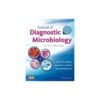

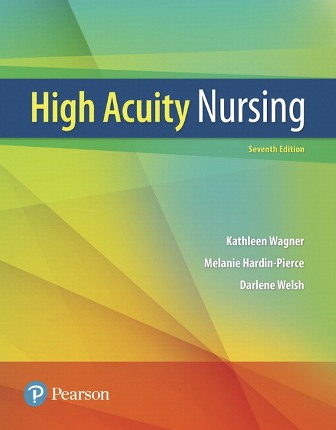



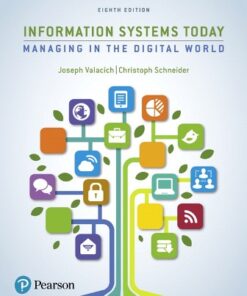
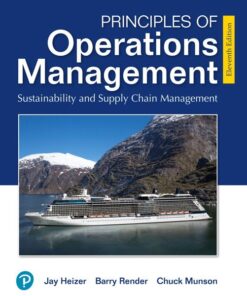

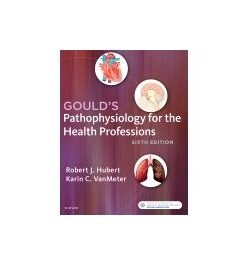
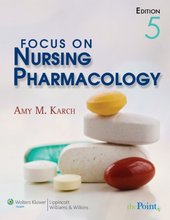
Reviews
There are no reviews yet.